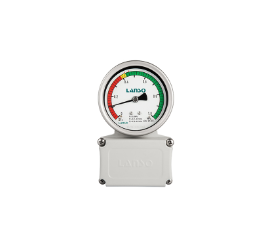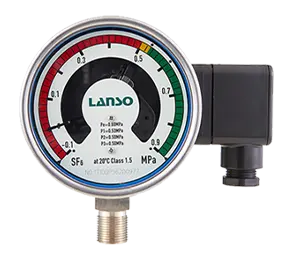The Role of the SF6 Relay
The SF6 relay is a device specifically designed to monitor the density of SF6 gas, playing a crucial role in SF6 circuit breakers. Its primary function is to reflect changes in SF6 gas density by measuring the gas pressure, ensuring accurate measurements despite environmental temperature variations. This relay includes a temperature compensation feature, enabling it to provide stable measurement results under different conditions, thereby ensuring the safe operation of the power system.
The Principle of the SF6 Relay
The working principle of the SF6 relay is based on the relationship between the pressure and density of SF6 gas, alongside a temperature compensation mechanism. In a sealed container, while the pressure of SF6 gas fluctuates with temperature changes, its density (mass per unit volume) remains constant if there are no gas leaks. The relay measures the gas pressure and utilizes an internal temperature compensation unit to automatically correct the impact of temperature on the pressure measurement, thus indirectly obtaining an accurate SF6 gas density value.
Specifically, the measurement system of the SF6 relay typically includes an elastic metal tube or bellows connected to the SF6 gas within the circuit breaker. When the gas pressure changes, this elastic structure deforms, driving a pointer or sensor to measure the pressure. Meanwhile, the temperature compensation system inside the relay, such as a bimetallic strip, senses environmental temperature changes and accordingly adjusts the measurement value to ensure accuracy.

Why the SF6 Relay Sets Two Lockout Pressures
The SF6 relay sets two lockout pressures—alarm pressure and lockout pressure—to better ensure the safe and stable operation of the power system. These two pressure values are typically set to different thresholds to trigger corresponding protective actions when the SF6 gas density decreases to different levels.
Alarm Pressure (P1): When the SF6 gas density drops to the alarm pressure, the relay issues an alarm signal, alerting the operators to take timely gas refilling measures. This helps prevent performance decline or potential safety hazards caused by low gas density.
Lockout Pressure (P2): If the SF6 gas density continues to drop and reaches the lockout pressure value, the relay will trigger the lockout mechanism, automatically prohibiting the circuit breaker's operation. This prevents the circuit breaker from malfunctioning due to severe gas density deficiency, avoiding potential accidents and damages. This dual protection setup ensures the safe and stable operation of the power system.
In summary, the SF6 relay plays an indispensable role in power systems. By deeply understanding its working principle and functional mechanism, as well as the reasons for setting two lockout pressures, we can better comprehend and apply this critical device, thus ensuring the safe and efficient operation of the power system.








